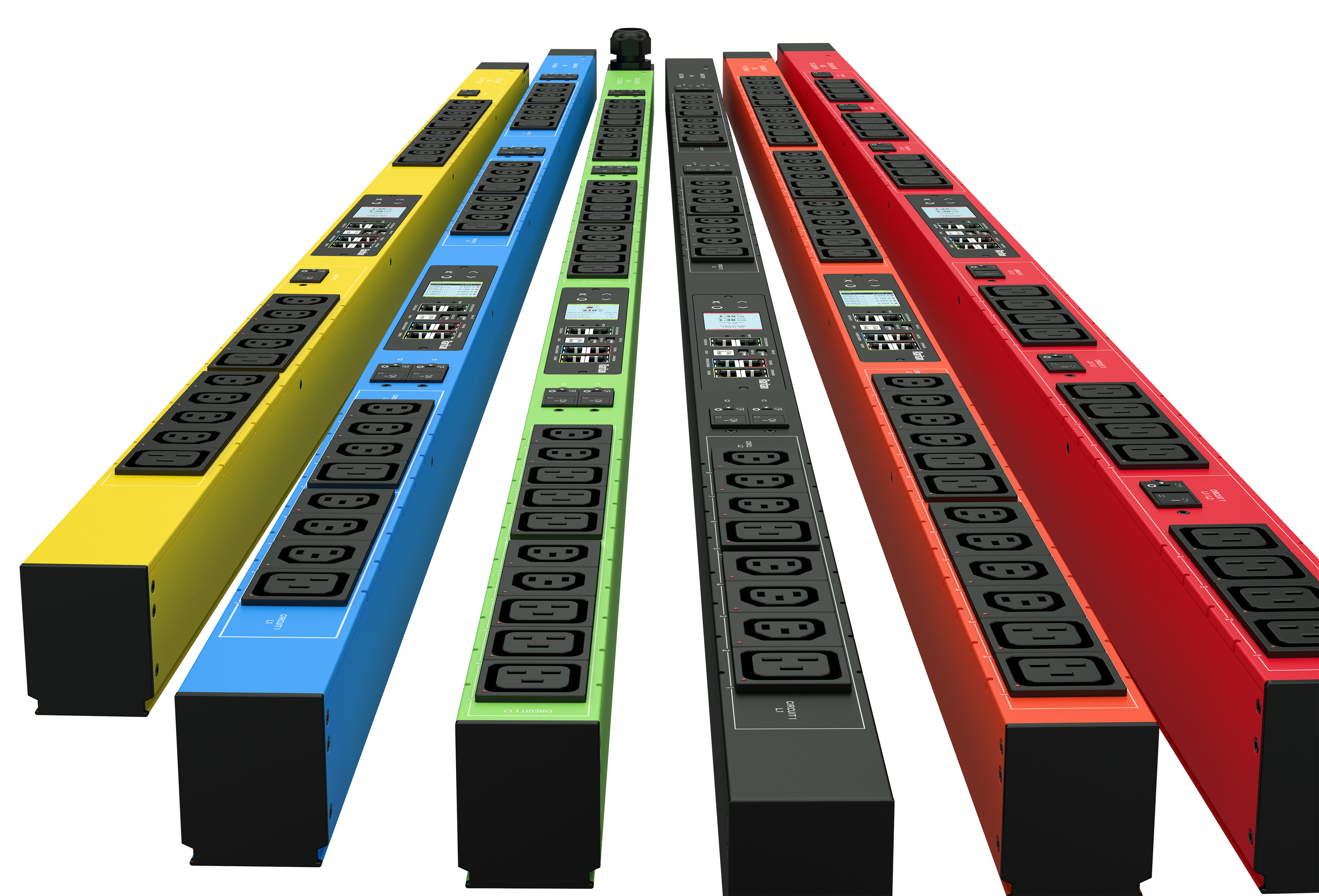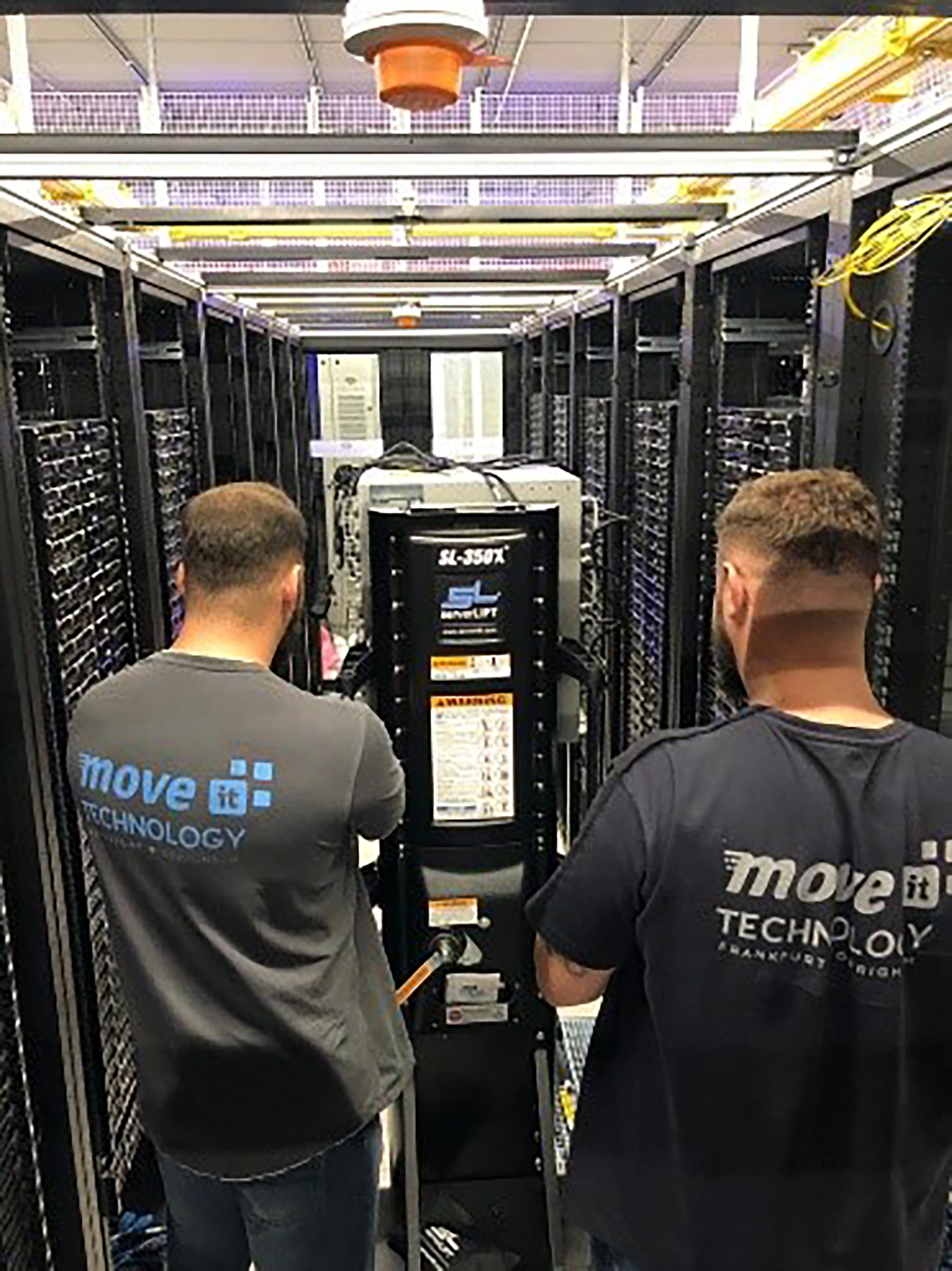CUSTOMEr CASE: Move-IT Technology
Country: Germany
Legrand is a key supplier for Move-IT Technology’s migration serviceMore and more companies are migrating parts of their IT infrastructure or even their entire on-premise data center to a colocation facility, complete with extensive, high speed connectivity options, enabling them to directly access Cloud platforms with minimal latency. Move-IT Technology provides such a professional migration service in Southern Germany, relying on key infrastructure suppliers such as Legrand.

Discover the full story:
To help minimise downtime for either staff or business partners, it’s important to engage an IT equipment relocation expert, who can coordinate the migration planning and implementation (dismantling, transport and set-up) process. This ensures that the new, relocated infrastructure is operational as and when expected. Additionally, the infrastructure that’s no longer required will be dismantled and disposed of securely and correctly. Perhaps most importantly, the managed migration should mean that the IT infrastructure at the new location is based on the latest technology, providing significant future-proofing ‘protection’. This should mean that the performance and capacity of data throughput - based on compute, storage and networking infrastructure – meets not just immediate requirements, but also anticipated expansion and new applications.
 Relocation with professional support
Relocation with professional support
A complete data center move is a logistical challenge that should be planned in detail in advance and then professionally implemented on the relocation date – even if much of the existing IT infrastructure is being replaced by new hardware. Obtaining the support of an IT relocation specialist is essential. For example, the data center service provider Move-IT Technology has a 10 year history of moving IT equipment for a variety of clients - the company has several branches in southern Germany.
After an initial visit, Move-IT Technology’s data center experts establish all the details for the move with the client’s project leaders. Subsequently, they produce a detailed dismantling plan for the existing data center and a relocation and installation plan for the new one, including a timetable. In the planning, the project team decides which components should be moved to the new premises and which should be disposed of. The new infrastructure with the new and existing components is planned together with the client. In the selection and purchase of the new equipment, the relocation specialist provides support and ensures that this is ready on time in the new premises on the move date. As a rule, even a complete data center move takes place in one weekend.
Dismantling of the existing data center
If the entire data center is relocating, Move-IT Technology starts dismantling the existing data center on a Friday afternoon, with the electricians first disconnecting the electricity and water supply and switching off the heating, air conditioning and fire protection system and disconnecting them from the grid. In the next step, the security technology is dismantled. The team also removes the hardware components that are to be reused and labels them so as to permit quicker, trouble-free reassembly at the new site.
The installers produce a cable removal plan for the associated cabling and this cable management expertise ensures that, after the move, the right cables are connected to the right components.
In the next stage, all the server racks, IT cabinets and power distribution units (PDUs) are dismantled and removed, as well as the cameras, transformers, decentralised cooling units, cable trays and the like. The IT professionals pack the servers and other delicate IT equipment securely and place them in special EDP shipment trays.
If hard disks are to be disposed of, the data center experts first delete their contents and then destroy them so that there is no longer any possibility of any data remaining on them. In terms of the UPSs, they remove the batteries and transport and dispose of them separately. The extinguishing medium from the fire protection system and the gas and coolants from the pipes supplying the air conditioning are pumped out and also correctly disposed of.
Then the fire protection and sprinkler systems and the entire air conditioning system can be removed. This is followed by the ventilation system, the cable seal sheathing and the lighting. Then the dismantling experts remove the walls of the cells, the false ceiling and the raised floor together with the associated support structure. They remove the remaining cabling in the cells and the anteroom, dismantle the metal floor in the cells and correctly dispose of all components that will no longer be needed at the new site. The hardware to be reused is taken to the new site with transport insurance. The client acquires clean-swept premises upon handover.
The new IT: laid out for new and innovative applications
At the new site, a Move-IT Technology assembly team is already busy assembling the IT racks and cages and laying the cable trays and the raised floor. The technical equipment is installed as per the client’s wishes. The company has a reliable pool of suppliers so as to guarantee a trouble-free process.
One of Move-IT’s key suppliers is Legrand, as it is the only company that can supply the crucial components for the grey and white spaces from a single source, including brands such as Raritan, Minkels and Server Technology. Move-IT can use Modulan cages, Minkels IT racks and support structures and cable trays from Legrand as required.
Energy efficiency
In the grey space with the power distribution, it is crucial that the solutions employed operate in an energy efficient manner and occupy minimal space. Here, modern bus bars from Starline and Zucchini are used, as they do not disturb the airflow in the sub-floor and measuring points can be installed in a flexible way to monitor consumption data. The UPS used should – if possible – not only demonstrate high efficiency but also modular adaptability for the required performance. For example, Legrand’s Keor MOD series is a very compact modular UPS which achieves an extraordinarily high efficiency of 96.8% with double conversion. This may be expanded to 250 kVA and remotely controlled and requires less than one square meter of floor space, even with the door open. The series also includes UPSs up to 500 kVA.
Legrand also offers energy-efficient active systems for series-based cooling. This eliminates the need for a raised floor.
With the cooling in particular, optimized channelling of the airflow in the (Minkels) IT cabinets is possible via (Modulan) hot or cold aisle containment and major savings in energy and cooling requirements can be made with such energy-efficient components. If, for example, (Raritan) intelligent PDUs are used, components not in use can be switched off and remotely activated as required. Since, by using these PDUs, the consumption is measurable for every connection, the loads can be evenly distributed over the racks, additionally, any defects in equipment can be quickly detected.
Residual current monitoring
Moreover, intelligent PDUs can constantly conduct residual current measurements in the 5-wire network. So, one may dispense with the stipulated regular insulation measurements that would be necessary with the use of earth leakage circuit breakers in conformity with standards (DIN EN 62020 and/or VDE 0663) and eliminate the associated interruption to operations.
Environmental conditions
PDUs also provide the opportunity to connect sensors for temperature and air humidity, in order to monitor environmental conditions. With the same controller, door locking, camera surveillance and monitoring of the integrated assets is also possible. The solution works with standard protocols such as SNMP and Modbus so it is easy to incorporate into a DCIM system. This system permits web-based configuration.
Both the PDUs with their attached sensors and the KVM over IP switches for remote access to servers are fully protected with standard-based security mechanisms, as is the case with the Legrand UPSs.
Cabling in the white space
A modern data center needs a modular, high-density cabling system in order to save as much expensive space as possible in the data center. Here, reserve bandwidth should be allowed for in the selection of the LWL or copper components. Today, pre-manufactured MPO-based solutions or LC duplex connectors are mostly used. If servers are to be connected via copper connectors, the planner should above all observe the gaps between the rows of racks - because with Category 8 (25 and 40 Gbit/s Ethernet) the distances including the patch cable are restricted to 30 meters. This means that one switches to direct attach switch server connectors in Top-of-Rack (ToR) configurations or the rows of racks are arranged in such a way that Middle-of-Row (MoR) and End-of-Row (EoR) configurations are possible. Legrand cabling systems offer modular and maintenance-friendly, high-density solutions for both copper and LWL, even for the high-performance computing sector.
All these products are designed for efficient, optimized use in the data center, are compatible with each other and come from a single source. This simplifies the issue of responsibility when it comes to maintenance and service in operation.
Test
Move-IT Technology prepares everything before the move, having installed, and documented, the cabling in advance. This means that the data center professionals can quickly install the transferred and new active components, servers and storage systems and complete the structured cabling, including the cable management. All ports and devices are labelled and documented. Once everything has been installed, the hardware is configured according to the client’s wishes. Lastly, the experts inspect all the components again and if necessary change any defective systems after consultation with the client. In this way, the systems in the existing data center can be switched off on Friday evening and on Monday morning they are already tested and ready for use by the users in the new data center.



